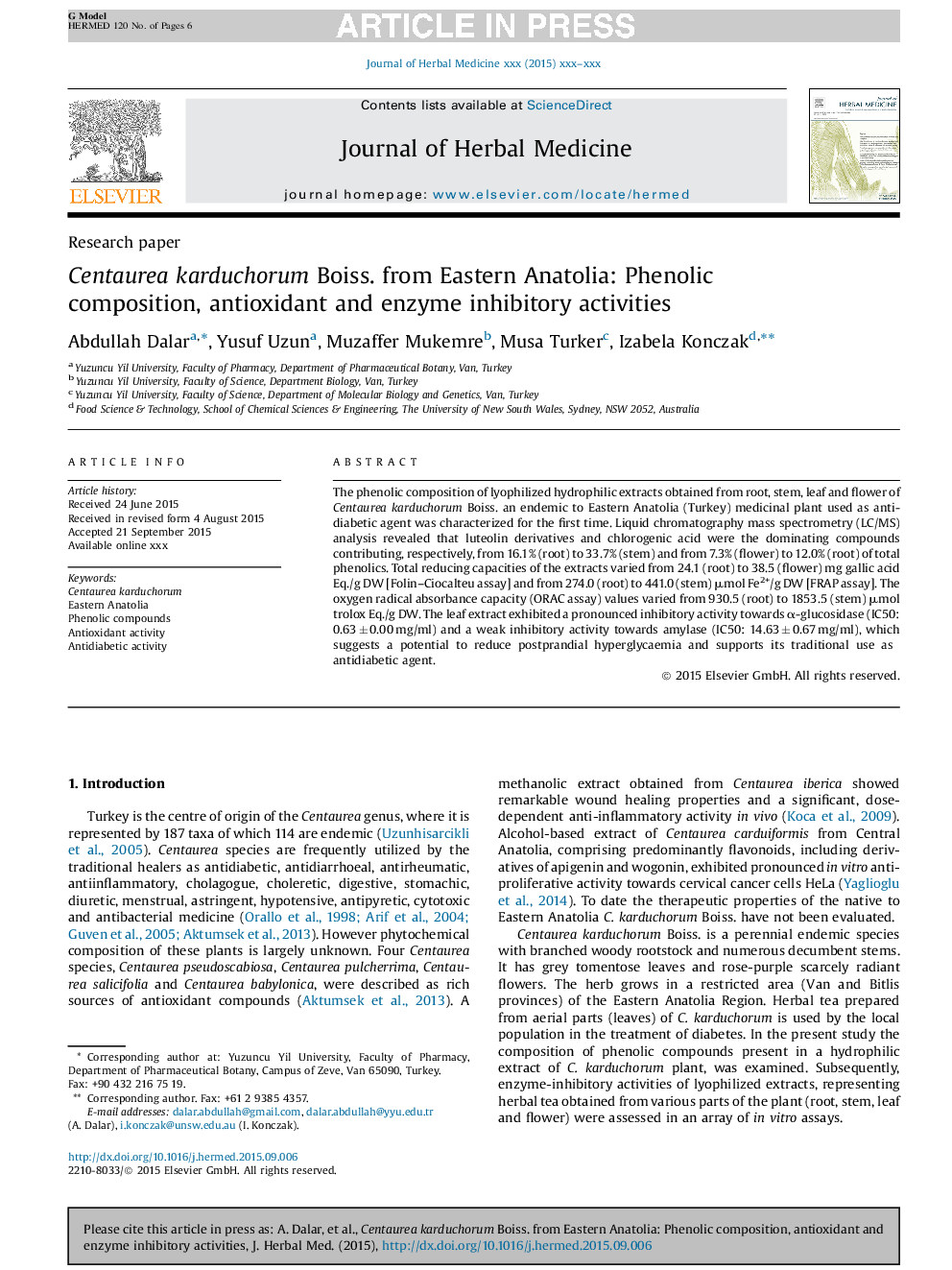| Article ID | Journal | Published Year | Pages | File Type |
|---|---|---|---|---|
| 5810339 | Journal of Herbal Medicine | 2015 | 6 Pages |
Abstract
The phenolic composition of lyophilized hydrophilic extracts obtained from root, stem, leaf and flower of Centaurea karduchorum Boiss. a medicinal plant endemic to Eastern Anatolia (Turkey) used as anti-diabetic agent was characterized for the first time. Liquid chromatography mass spectrometry (LC/MS) analysis revealed that luteolin derivatives and chlorogenic acid were the dominating compounds contributing, respectively, from 16.1% (root) to 33.7% (stem) and from 7.3% (flower) to 12.0% (root) of total phenolics. Total reducing capacities of the extracts varied from 24.1 (root) to 38.5 (flower) mg gallic acid Eq./g DW [Folin-Ciocalteu assay] and from 274.0 (root) to 441.0 (stem) μmol Fe2+/g DW [FRAP assay]. The oxygen radical absorbance capacity (ORAC assay) values varied from 930.5 (root) to 1853.5 (stem) μmol trolox Eq./g DW. The leaf extract exhibited a pronounced inhibitory activity towards α-glucosidase (IC50: 0.63 ± 0.00 mg/ml) and a weak inhibitory activity towards amylase (IC50: 14.63 ± 0.67 mg/ml), which suggests a potential to reduce postprandial hyperglycaemia and supports its traditional use as antidiabetic agent.
Related Topics
Health Sciences
Medicine and Dentistry
Complementary and Alternative Medicine
Authors
Abdullah Dalar, Yusuf Uzun, Muzaffer Mukemre, Musa Turker, Izabela Konczak,
